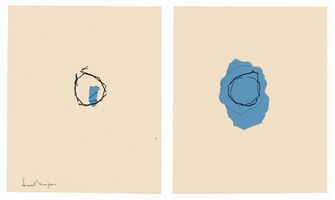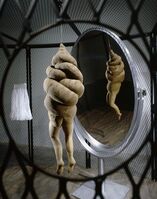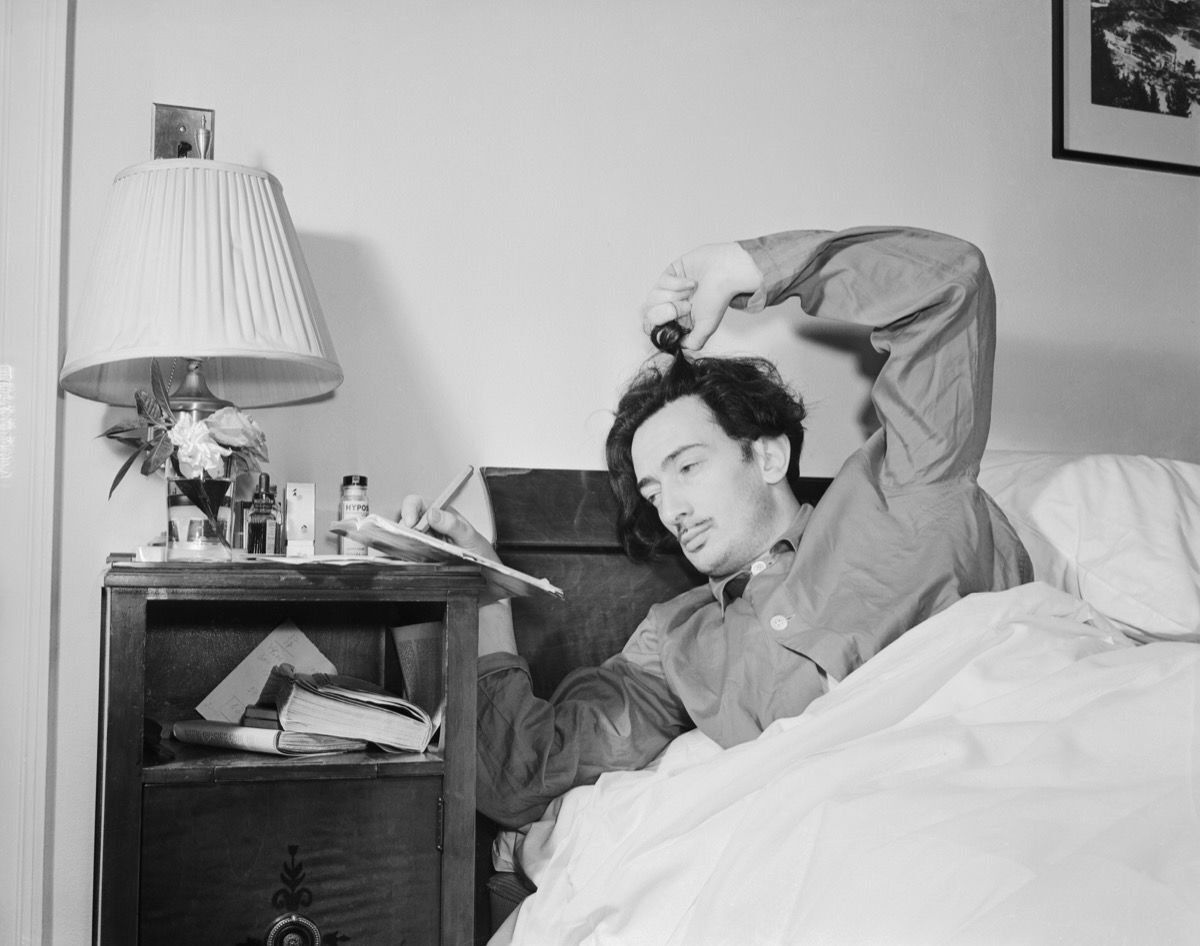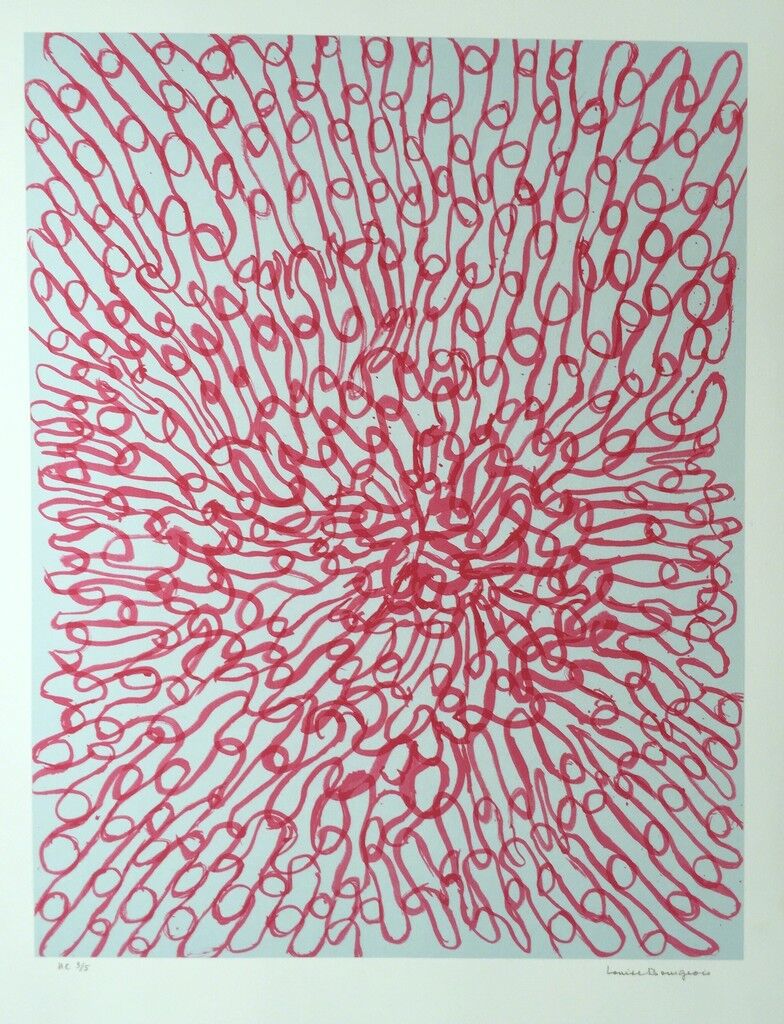How Famous Artists Dealt with Insomnia
artsy_Like many people, I have been an insomniac for most of my adult life. In times of unwelcome wakefulness, I let my mind wander into unexplored territories. Entering a surreal and sleepless dimension, I sometimes consider giving up on the painful process entirely and writing—in the hope that my absurd thoughts aren’t unintelligible nonsense, but, just possibly, flashes of creative genius (this has yet to happen).
Although I may not be particularly productive during these agonizing hours of the night, many artists throughout history have successfully dedicated their sleepless sufferings to creativity. From Vincent van Gogh
and Louise Bourgeois
 Louise BourgeoisFrench-American, 1911–2010Follow
Louise BourgeoisFrench-American, 1911–2010Follow
to Tracey Emin
, and Tomoko Takahashi, visual artists have pushed their physical and psychological boundaries during periods of wakefulness, either as a result of their deteriorating mental health, or as a deliberate artistic strategy.
, one of the most important Abstract Expressionists
, was another famous insomniac. Her work is currently showing in “Lee Krasner: Living Colour”at London’s Barbican Centre, a long overdue retrospective dedicated to her visually arresting, colourful abstractions.

Lee Krasner, Polar Stampede, 1960, Doris and Donald Fisher Collection, San Francisco MoMA. © The Pollock-Krasner Foundation. Courtesy Kasmin Gallery.
Many of Krasner’s dizzying, large-scale works were created in the aftermath of her husband Jackson Pollock’s death. After his spiralling alcoholism led to his premature demise in a car crash in 1956, Krasner entered a state of depression and insomnia. She expressed the pain she internalized in her frenetic, impulsive and kaleidoscopic canvases found in the “Night Journeys” series. These paintings diverge from her previously more ordered and geometric compositions.
Unable to sleep, she worked nocturnally in Pollock’s barn. There, she created ambitious, primal, emotive, and gestural works like Polar Stampede (1960), reflecting her abandonment of bold color for muted hues of white and umber.
Artistic creativity has long been associated with bad sleep. Insomnia was a hallmark of the mythologized suffering, bohemian artist working in the dead of night. Marcel Proust wrote much of Remembrance of Things Past (or In Search of Lost Time) in the early hours of the morning. The liminal state of consciousness between sleep and waking was one of the book’s main themes.
The French author Colette agreed, saying that “insomnia is almost an oasis in which those who have to think or suffer darkly take refuge.” And Vladimir Nabokov, another famous night creature, once commented that “sleep is the most moronic fraternity in the world.”

Salvador Dali, surrealist painter, in bed. Photo by Bettmann, via Getty Images.
With today’s obsession with the “perfect night’s sleep,” this romanticization of the sleep-deprived bohemian doesn’t quite fit the identity of the contemporary artist. No longer does the experimental creative process of Surrealist
painter Salvador Dalí
—who tried to tap into his subconscious by sitting upright in a chair all night, while dozing off and holding a spoon in his hand—seem appealing.
What real evidence is there to suggest that sleeplessness leads to creativity?
Neurological studies exploring the effects of sleep deprivation on the brain confirm that poor sleep leads to faulty perceptions, cognitive impairment, and lower performance. If undealt with for prolonged lengths of time, insomnia can have devastating or even fatal effects; anxiety, depression, cardiovascular disease, and death can occur.
Deeper understandings of how sleep affects the brain developed from the findings of psychologist Otto Loewi, who woke up in the middle of the night before Easter Sunday, 1920, to write down his Nobel Prize–winning theory. In short, by experimenting, initially with his own sleep, Loewi proved that during slumber, the brain’s nerve cells communicate chemically, exchanging neurotransmitters.
 Vincent van GoghStarry Night, 1889
Vincent van GoghStarry Night, 1889
The Museum of Modern Art, New York
Fascinated with this topic, in 2018, French artist Pierre Huyghe
usedartificial intelligence to reconstruct a brain’s neural network. The result was a series of LED screens capturing what the brain looks like during sleep—a disturbing, nonsensical mirage of objects and images.
Indeed, in recent studies supporting a theory of creative insomnia, psychologists have found evidence that during both sleep and wakefulness, the brain searches for analogies between unrelated ideas, images, and objects. This means that in a conscious yet sleep-deprived state, we are able to think creatively, and “outside of the box.”
Van Gogh, one of the most well-known insomniacs, experienced sleeplessness during his struggles with mental health and eventual committal to an asylum. Yet that time period of 1888–89, commonly referred to as the “Arles period,” was one of his most prolific in terms of artistic production. Art historian and curator Joachim Pisarro has claimed that Van Gogh “lived at night” and “didn’t sleep until three or four in the morning.…It was during the night hours that his experiments with imagination and memory went the farthest.”
In Arles, Van Gogh painted some of his most iconic works, including The Starry Night over the Rhone at Arles (1888) and The Starry Night (1889). These paintings feature unorthodox colors and distorted perspectives. In some ways, they may even evoke the feeling of being chronically sleep-deprived.
 Louise BourgeoisInsomnia (2), 1996
Louise BourgeoisInsomnia (2), 1996
In a letter to his brother Theodore in 1889, Van Gogh wrote: “I fight this insomnia by a very, very strong dose of camphor in my pillow and mattress, and if ever you can’t sleep, I recommend this to you.” Camphor is a waxy substance extracted from the bark of the Cinnamomum camphora tree; if ingested, it can have fatal consequences.
Like her artistic predecessors, Louise Bourgeois also endured insomnia for most of her life. She made her “Insomnia Drawing” series between November 1994 and June 1995 during a particularly bad bout of anxiety. Like Van Gogh, her wakefulness led to astonishing productivity. In total, she created 220 drawings, all of which invite the viewer into her solitary, nocturnal universe, precariously suspended between sleep and surreal consciousness.
The unsettling and sometimes humorous art of Tracey Emin—another famous insomniac—pays homage to Bourgeois. Emin has described insomnia as “crippling” or “soul-destroying,” akin to an unwelcome guest who overstays their welcome. Her 2019 exhibition “A Fortnight of Tears” at White Cube in London documented her sleep struggles. It featured many of her photographic self-portraits taken during the midst of her lonely wakefulness.
Whether or not creativity is really enhanced by lack of sleep is still being studied. However, it is clear that for centuries, artists have been committing their mesmerizing nocturnal thoughts, illogical musings, or flashes of creative genius to canvasarts
